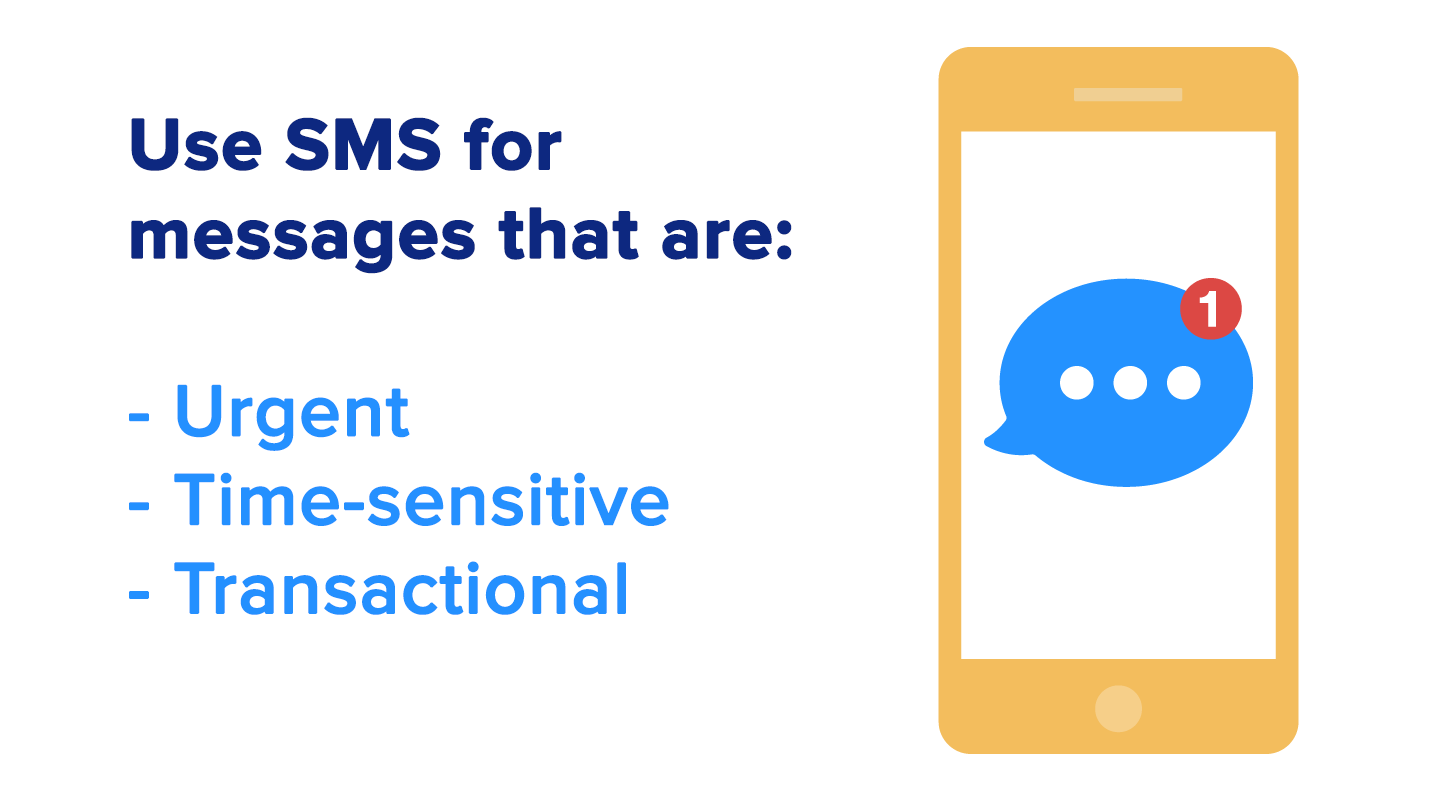Brands are constantly on the lookout for innovative ways to reach their target audience with compelling messages delivered at just the right time. Two powerful tools in the arsenal of every marketer are SMS and push notifications.
SMS (which stands for Short Messaging Service) messages are text messages sent to a user’s mobile device. Whereas Push notifications (or PNs) are alerts — typically a pop-up or other message — generated by a mobile app when the application is not open. Both are typically used to notify the user of a new message, update, reminder, social media post, and more, and users must opt in to receiving them.
But, marketers often struggle to make their SMS messages more effective. The ones that succeed leverage customer data to make their campaigns more personal — so they resonate with the recipient.
By customizing SMS messages according to each user’s preferences and behaviors, brands can significantly boost user engagement and conversion rates. Let’s explore this type further, how it compares to traditional push notifications, and how brands can use customer data to deliver personalized, engaging, and highly effective messages.
Push Notification vs SMS: What’s the Difference?
Push notification vs SMS? Both types of messages serve a common goal: to engage users by providing timely and relevant information. However, there are a few significant differences between them.
Push notifications are nifty, clickable messages sent to a user’s device through a mobile app. They are typically used to provide updates, promote new features, and re-engage inactive users who have installed the app.

Examples of when to use push notifications.
On the other hand, SMS messages are simply text messages sent to a user’s mobile phone — making them accessible to both app users and non-app users. SMS has a broader reach since it does not depend on an app being installed. It is also an excellent channel for time-sensitive communications such as one-time passwords, appointment reminders, and flash sales.

Examples of when to use SMS messages.
While push notifications excel for in-app engagement, SMS messaging has unique advantages:
- Reach: SMS reaches users even outside the app.
- Immediate delivery: SMS is delivered instantly.
- High open, click and response rate: Text messages have a 98% open and 45% response rate and the average response time is 3 minutes*.
If used optimally, SMS can prove to be a game-changer for any brand’s marketing strategy. But how do marketers ensure their SMS campaigns stand out and provide the desired boost in engagement?
Unlock the Power of Personalization
These days, providing personalized communications and user experiences is no longer optional. Consumers expect it from the brands they interact with. This holds true for SMS messages as well: generic, one-size-fits-all messages are not good enough. To organically engage with your audience and drive desired results, consider these strategies:
Collect Comprehensive Customer Data
- Gather data from various sources. Track user behavior, preferences and demographics to build a rich customer profile. The more data marketers have about the customers, the more they can personalize their SMS campaigns.
Segmentation: Divide and Conquer
- Segment the audience based on demographics, behavior, past purchases or preferences. This enables you to create targeted lists with minimum effort.
- Tailor communication to each segment, whether it’s a special offer for frequent shoppers or a product recommendation based on past interactions. Personalized content resonates with the audience. Read how fintech app Beblue saw a 96% jump in new active users with advanced customer segmentation.
Behavioral Triggers: Timing Is Everything
- Set up behavioral triggers based on user actions. For example: did someone abandon their cart? Send a gentle reminder. To complete the purchase, or follow up with a post purchase thank-you message.
- Automate triggers to deliver relevant SMS notifications to users at the right moment.
Dynamic Content: Make It Personal
- Insert personalized details into the communication using merge tags. Address users by name or reference their recent activity. (Just don’t be creepy about it.)
- A simple “Hi [Name], your favorite items are back in stock!” can make all the difference.
A/B Testing
- Experiment with different message content, timing, and delivery frequency. Use A/B testing to help determine what resonates best with each user segment. Read how neobank North Loop doubled its engagement rate with campaign A/B testing.
Analytics
- Gain valuable insights about performance and efficacy of the SMS campaigns you run with CleverTap’s analytics tools.
- Fine-tune your SMS strategy based on that analytical data for optimal results.
Find the Right Engagement Platform
SMS messages are a potent tool to enhance customer engagement and personalization is the key to unlock its full potential. By leveraging CleverTap’s product features and capabilities marketers can harness the power of rich customer data and deliver SMS messages that are of value to the users, drive conversions and elevate user experience.
To learn how CleverTap can help marketers achieve this, schedule a demo, start sending personalized messaging using SMS, push notification, or web messaging and watch engagement rates soar.

Mrinal Parekh 
Leads Product Marketing & Analyst Relations.Expert in cross-channel marketing strategies & platforms.
Free Customer Engagement Guides
Join our newsletter for actionable tips and proven strategies to grow your business and engage your customers.















































